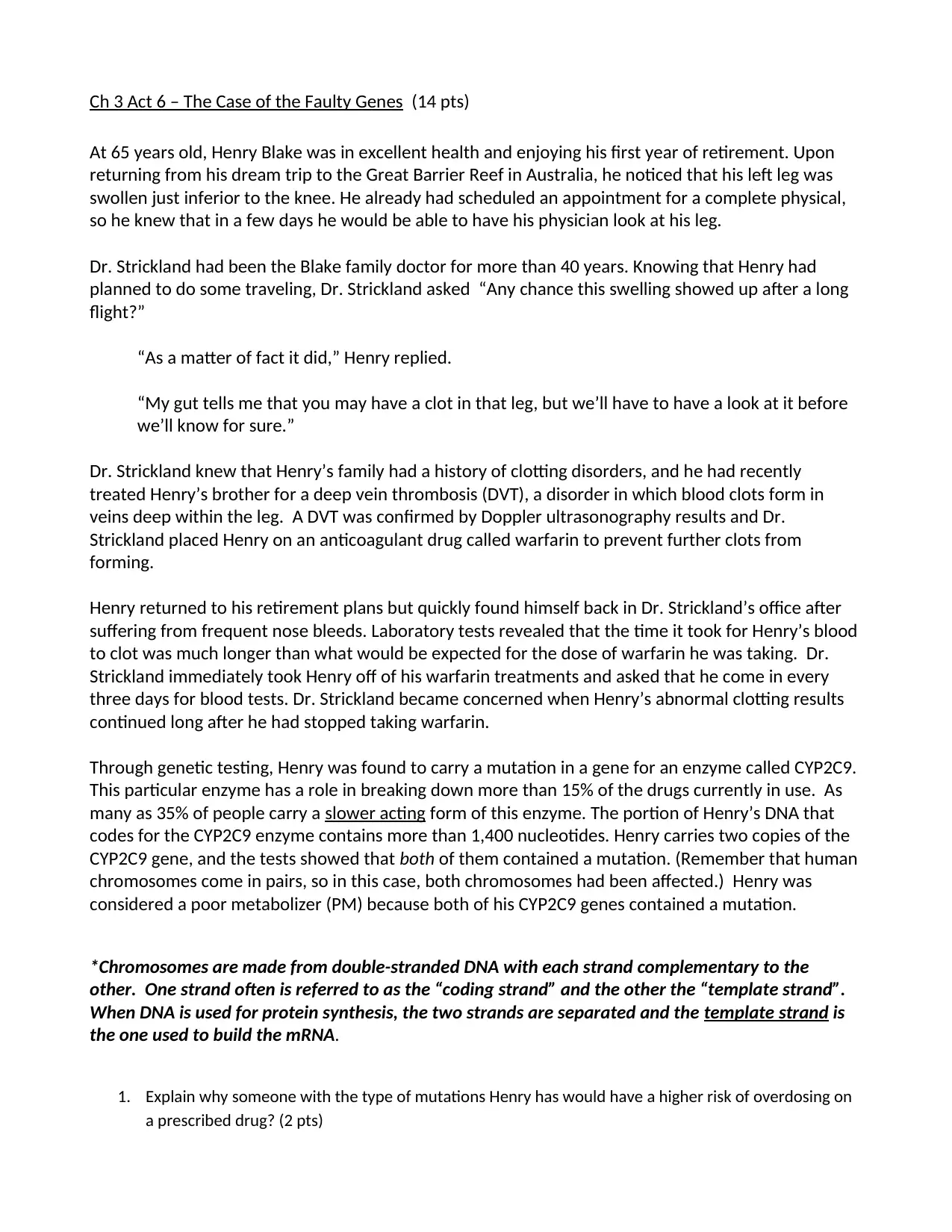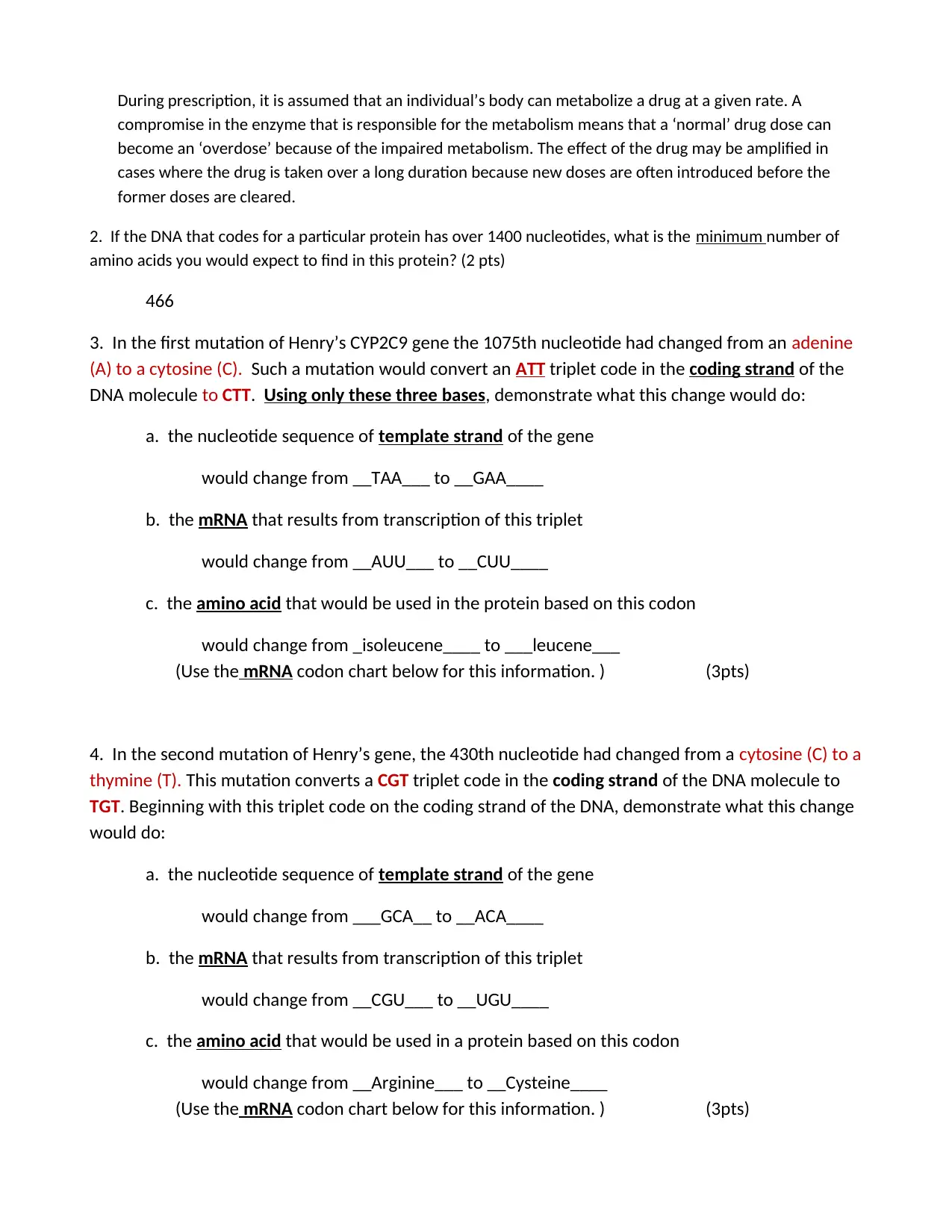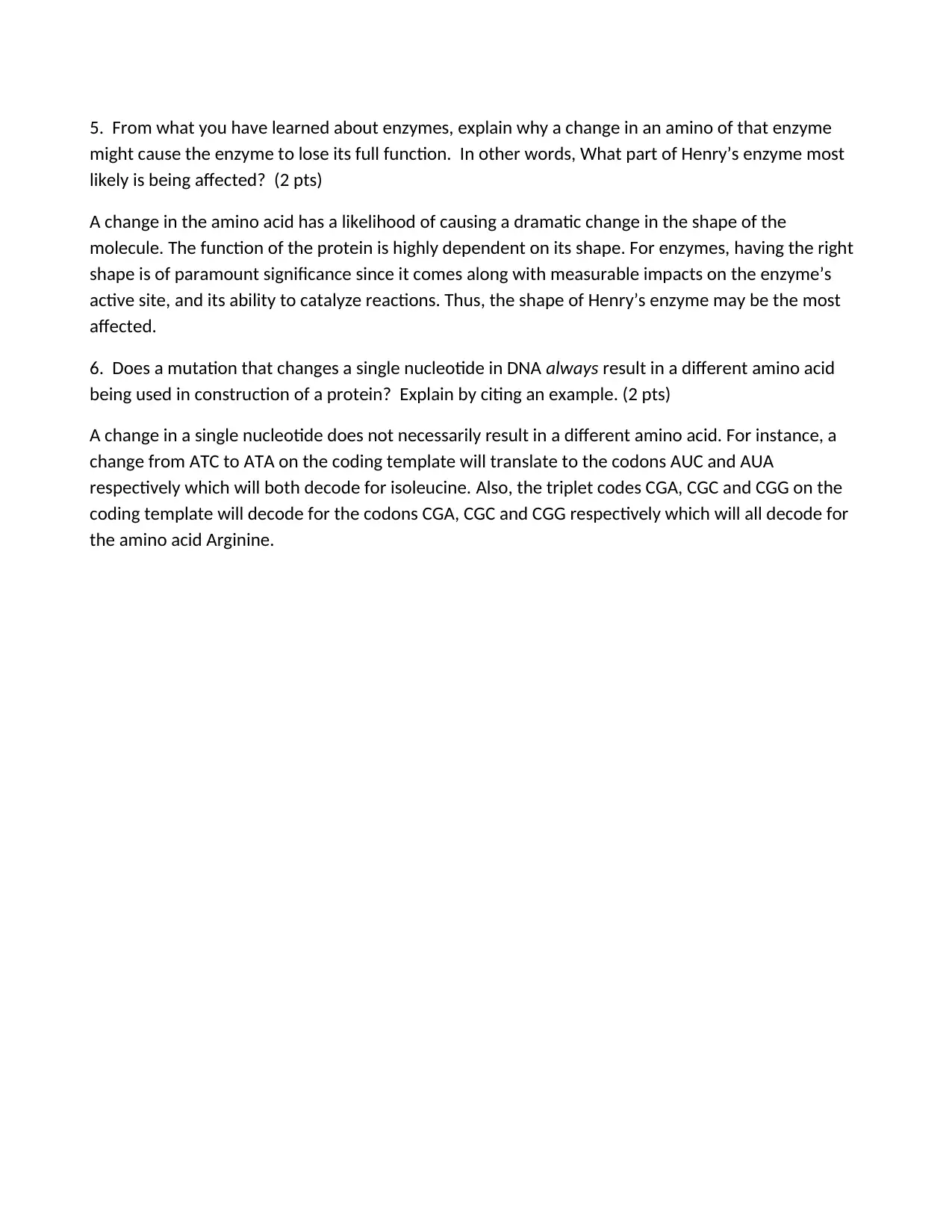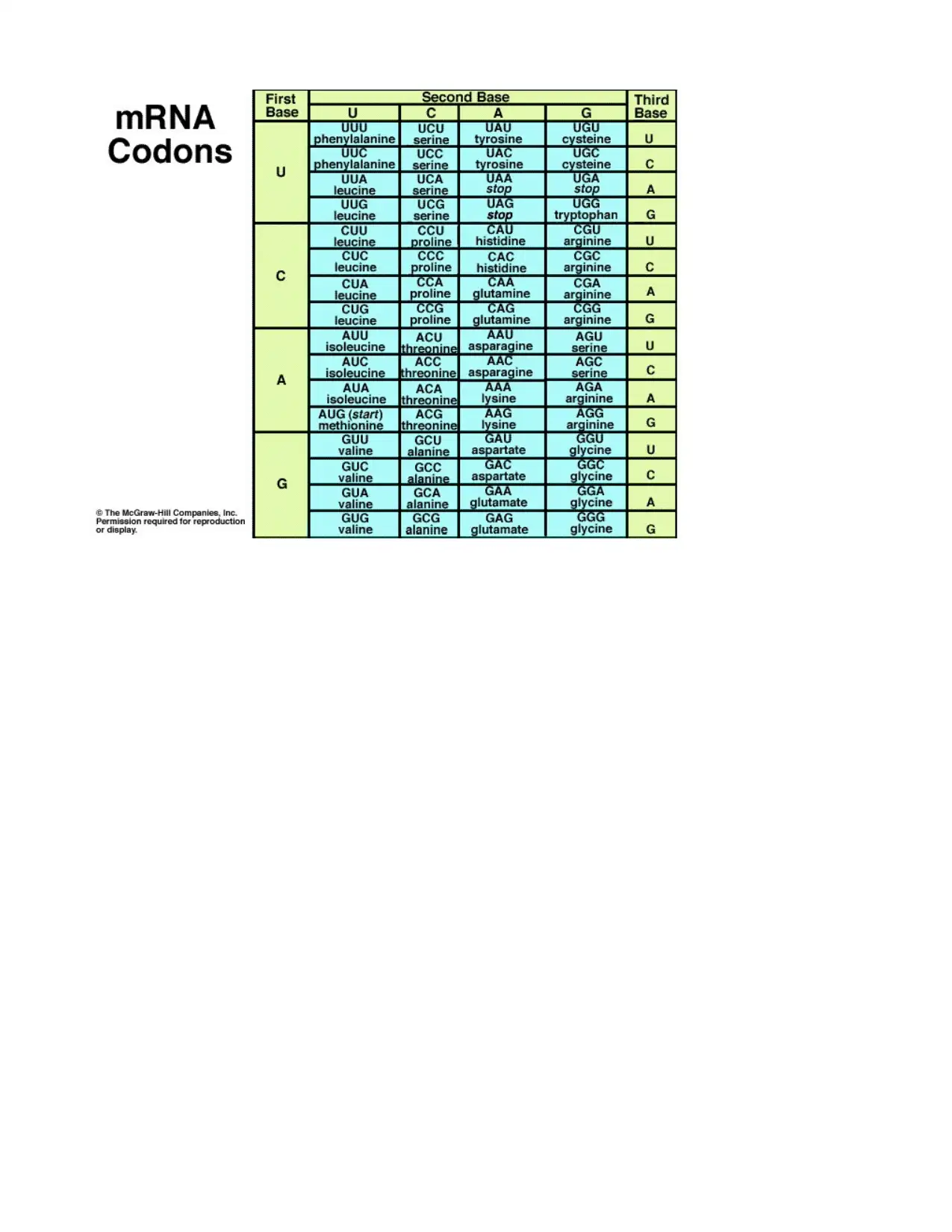Case Study: Faulty Genes & Drug Metabolism
VerifiedAdded on 2020/04/01
|4
|1214
|263
AI Summary
This assignment delves into a case study of Henry Blake, who experiences complications due to a mutation in his CYP2C9 gene affecting his ability to metabolize warfarin. Students are tasked with explaining the impact of these mutations on protein structure and function, analyzing the changes in amino acids and their consequences for enzyme activity, and understanding how single nucleotide variations can lead to altered protein synthesis.
Contribute Materials
Your contribution can guide someone’s learning journey. Share your
documents today.

Ch 3 Act 6 – The Case of the Faulty Genes (14 pts)
At 65 years old, Henry Blake was in excellent health and enjoying his first year of retirement. Upon
returning from his dream trip to the Great Barrier Reef in Australia, he noticed that his left leg was
swollen just inferior to the knee. He already had scheduled an appointment for a complete physical,
so he knew that in a few days he would be able to have his physician look at his leg.
Dr. Strickland had been the Blake family doctor for more than 40 years. Knowing that Henry had
planned to do some traveling, Dr. Strickland asked “Any chance this swelling showed up after a long
flight?”
“As a matter of fact it did,” Henry replied.
“My gut tells me that you may have a clot in that leg, but we’ll have to have a look at it before
we’ll know for sure.”
Dr. Strickland knew that Henry’s family had a history of clotting disorders, and he had recently
treated Henry’s brother for a deep vein thrombosis (DVT), a disorder in which blood clots form in
veins deep within the leg. A DVT was confirmed by Doppler ultrasonography results and Dr.
Strickland placed Henry on an anticoagulant drug called warfarin to prevent further clots from
forming.
Henry returned to his retirement plans but quickly found himself back in Dr. Strickland’s office after
suffering from frequent nose bleeds. Laboratory tests revealed that the time it took for Henry’s blood
to clot was much longer than what would be expected for the dose of warfarin he was taking. Dr.
Strickland immediately took Henry off of his warfarin treatments and asked that he come in every
three days for blood tests. Dr. Strickland became concerned when Henry’s abnormal clotting results
continued long after he had stopped taking warfarin.
Through genetic testing, Henry was found to carry a mutation in a gene for an enzyme called CYP2C9.
This particular enzyme has a role in breaking down more than 15% of the drugs currently in use. As
many as 35% of people carry a slower acting form of this enzyme. The portion of Henry’s DNA that
codes for the CYP2C9 enzyme contains more than 1,400 nucleotides. Henry carries two copies of the
CYP2C9 gene, and the tests showed that both of them contained a mutation. (Remember that human
chromosomes come in pairs, so in this case, both chromosomes had been affected.) Henry was
considered a poor metabolizer (PM) because both of his CYP2C9 genes contained a mutation.
*Chromosomes are made from double-stranded DNA with each strand complementary to the
other. One strand often is referred to as the “coding strand” and the other the “template strand”.
When DNA is used for protein synthesis, the two strands are separated and the template strand is
the one used to build the mRNA.
1. Explain why someone with the type of mutations Henry has would have a higher risk of overdosing on
a prescribed drug? (2 pts)
At 65 years old, Henry Blake was in excellent health and enjoying his first year of retirement. Upon
returning from his dream trip to the Great Barrier Reef in Australia, he noticed that his left leg was
swollen just inferior to the knee. He already had scheduled an appointment for a complete physical,
so he knew that in a few days he would be able to have his physician look at his leg.
Dr. Strickland had been the Blake family doctor for more than 40 years. Knowing that Henry had
planned to do some traveling, Dr. Strickland asked “Any chance this swelling showed up after a long
flight?”
“As a matter of fact it did,” Henry replied.
“My gut tells me that you may have a clot in that leg, but we’ll have to have a look at it before
we’ll know for sure.”
Dr. Strickland knew that Henry’s family had a history of clotting disorders, and he had recently
treated Henry’s brother for a deep vein thrombosis (DVT), a disorder in which blood clots form in
veins deep within the leg. A DVT was confirmed by Doppler ultrasonography results and Dr.
Strickland placed Henry on an anticoagulant drug called warfarin to prevent further clots from
forming.
Henry returned to his retirement plans but quickly found himself back in Dr. Strickland’s office after
suffering from frequent nose bleeds. Laboratory tests revealed that the time it took for Henry’s blood
to clot was much longer than what would be expected for the dose of warfarin he was taking. Dr.
Strickland immediately took Henry off of his warfarin treatments and asked that he come in every
three days for blood tests. Dr. Strickland became concerned when Henry’s abnormal clotting results
continued long after he had stopped taking warfarin.
Through genetic testing, Henry was found to carry a mutation in a gene for an enzyme called CYP2C9.
This particular enzyme has a role in breaking down more than 15% of the drugs currently in use. As
many as 35% of people carry a slower acting form of this enzyme. The portion of Henry’s DNA that
codes for the CYP2C9 enzyme contains more than 1,400 nucleotides. Henry carries two copies of the
CYP2C9 gene, and the tests showed that both of them contained a mutation. (Remember that human
chromosomes come in pairs, so in this case, both chromosomes had been affected.) Henry was
considered a poor metabolizer (PM) because both of his CYP2C9 genes contained a mutation.
*Chromosomes are made from double-stranded DNA with each strand complementary to the
other. One strand often is referred to as the “coding strand” and the other the “template strand”.
When DNA is used for protein synthesis, the two strands are separated and the template strand is
the one used to build the mRNA.
1. Explain why someone with the type of mutations Henry has would have a higher risk of overdosing on
a prescribed drug? (2 pts)
Secure Best Marks with AI Grader
Need help grading? Try our AI Grader for instant feedback on your assignments.

During prescription, it is assumed that an individual’s body can metabolize a drug at a given rate. A
compromise in the enzyme that is responsible for the metabolism means that a ‘normal’ drug dose can
become an ‘overdose’ because of the impaired metabolism. The effect of the drug may be amplified in
cases where the drug is taken over a long duration because new doses are often introduced before the
former doses are cleared.
2. If the DNA that codes for a particular protein has over 1400 nucleotides, what is the minimum number of
amino acids you would expect to find in this protein? (2 pts)
466
3. In the first mutation of Henry’s CYP2C9 gene the 1075th nucleotide had changed from an adenine
(A) to a cytosine (C). Such a mutation would convert an ATT triplet code in the coding strand of the
DNA molecule to CTT. Using only these three bases, demonstrate what this change would do:
a. the nucleotide sequence of template strand of the gene
would change from __TAA___ to __GAA____
b. the mRNA that results from transcription of this triplet
would change from __AUU___ to __CUU____
c. the amino acid that would be used in the protein based on this codon
would change from _isoleucene____ to ___leucene___
(Use the mRNA codon chart below for this information. ) (3pts)
4. In the second mutation of Henry’s gene, the 430th nucleotide had changed from a cytosine (C) to a
thymine (T). This mutation converts a CGT triplet code in the coding strand of the DNA molecule to
TGT. Beginning with this triplet code on the coding strand of the DNA, demonstrate what this change
would do:
a. the nucleotide sequence of template strand of the gene
would change from ___GCA__ to __ACA____
b. the mRNA that results from transcription of this triplet
would change from __CGU___ to __UGU____
c. the amino acid that would be used in a protein based on this codon
would change from __Arginine___ to __Cysteine____
(Use the mRNA codon chart below for this information. ) (3pts)
compromise in the enzyme that is responsible for the metabolism means that a ‘normal’ drug dose can
become an ‘overdose’ because of the impaired metabolism. The effect of the drug may be amplified in
cases where the drug is taken over a long duration because new doses are often introduced before the
former doses are cleared.
2. If the DNA that codes for a particular protein has over 1400 nucleotides, what is the minimum number of
amino acids you would expect to find in this protein? (2 pts)
466
3. In the first mutation of Henry’s CYP2C9 gene the 1075th nucleotide had changed from an adenine
(A) to a cytosine (C). Such a mutation would convert an ATT triplet code in the coding strand of the
DNA molecule to CTT. Using only these three bases, demonstrate what this change would do:
a. the nucleotide sequence of template strand of the gene
would change from __TAA___ to __GAA____
b. the mRNA that results from transcription of this triplet
would change from __AUU___ to __CUU____
c. the amino acid that would be used in the protein based on this codon
would change from _isoleucene____ to ___leucene___
(Use the mRNA codon chart below for this information. ) (3pts)
4. In the second mutation of Henry’s gene, the 430th nucleotide had changed from a cytosine (C) to a
thymine (T). This mutation converts a CGT triplet code in the coding strand of the DNA molecule to
TGT. Beginning with this triplet code on the coding strand of the DNA, demonstrate what this change
would do:
a. the nucleotide sequence of template strand of the gene
would change from ___GCA__ to __ACA____
b. the mRNA that results from transcription of this triplet
would change from __CGU___ to __UGU____
c. the amino acid that would be used in a protein based on this codon
would change from __Arginine___ to __Cysteine____
(Use the mRNA codon chart below for this information. ) (3pts)

5. From what you have learned about enzymes, explain why a change in an amino of that enzyme
might cause the enzyme to lose its full function. In other words, What part of Henry’s enzyme most
likely is being affected? (2 pts)
A change in the amino acid has a likelihood of causing a dramatic change in the shape of the
molecule. The function of the protein is highly dependent on its shape. For enzymes, having the right
shape is of paramount significance since it comes along with measurable impacts on the enzyme’s
active site, and its ability to catalyze reactions. Thus, the shape of Henry’s enzyme may be the most
affected.
6. Does a mutation that changes a single nucleotide in DNA always result in a different amino acid
being used in construction of a protein? Explain by citing an example. (2 pts)
A change in a single nucleotide does not necessarily result in a different amino acid. For instance, a
change from ATC to ATA on the coding template will translate to the codons AUC and AUA
respectively which will both decode for isoleucine. Also, the triplet codes CGA, CGC and CGG on the
coding template will decode for the codons CGA, CGC and CGG respectively which will all decode for
the amino acid Arginine.
might cause the enzyme to lose its full function. In other words, What part of Henry’s enzyme most
likely is being affected? (2 pts)
A change in the amino acid has a likelihood of causing a dramatic change in the shape of the
molecule. The function of the protein is highly dependent on its shape. For enzymes, having the right
shape is of paramount significance since it comes along with measurable impacts on the enzyme’s
active site, and its ability to catalyze reactions. Thus, the shape of Henry’s enzyme may be the most
affected.
6. Does a mutation that changes a single nucleotide in DNA always result in a different amino acid
being used in construction of a protein? Explain by citing an example. (2 pts)
A change in a single nucleotide does not necessarily result in a different amino acid. For instance, a
change from ATC to ATA on the coding template will translate to the codons AUC and AUA
respectively which will both decode for isoleucine. Also, the triplet codes CGA, CGC and CGG on the
coding template will decode for the codons CGA, CGC and CGG respectively which will all decode for
the amino acid Arginine.

1 out of 4
Your All-in-One AI-Powered Toolkit for Academic Success.
+13062052269
info@desklib.com
Available 24*7 on WhatsApp / Email
![[object Object]](/_next/static/media/star-bottom.7253800d.svg)
Unlock your academic potential
© 2024 | Zucol Services PVT LTD | All rights reserved.